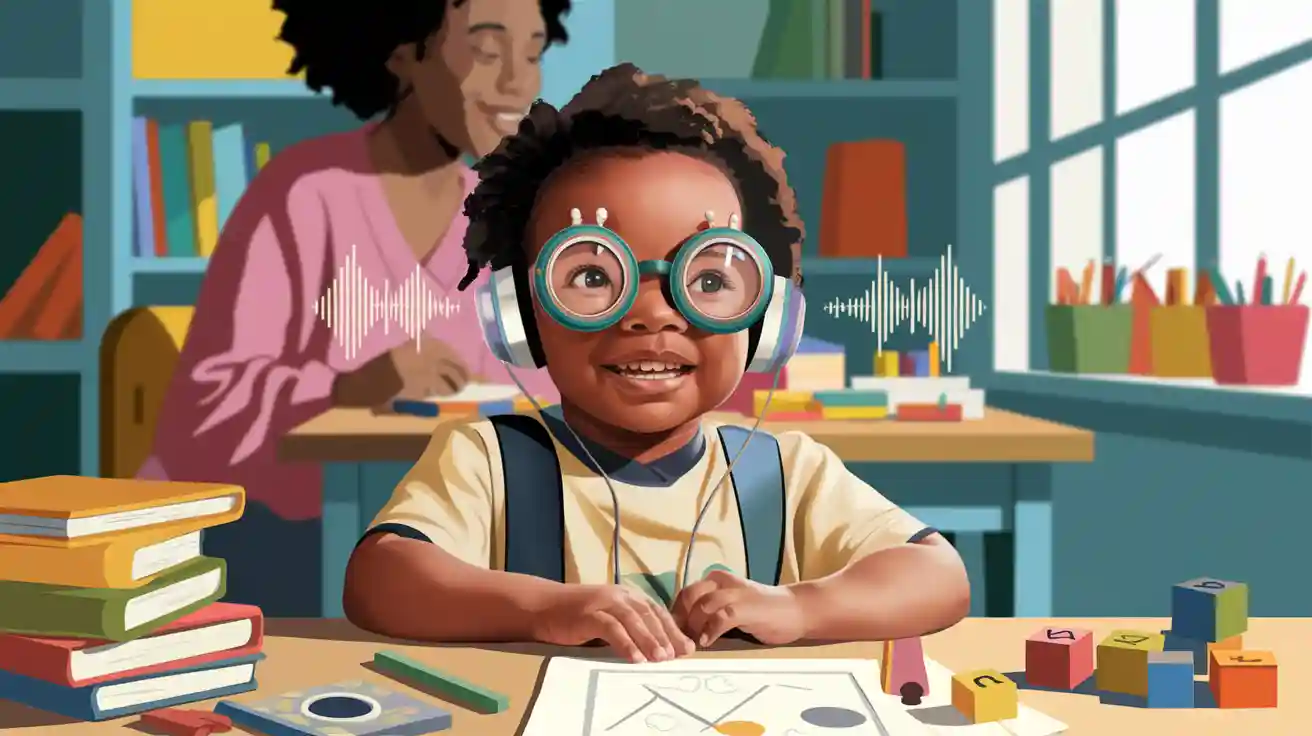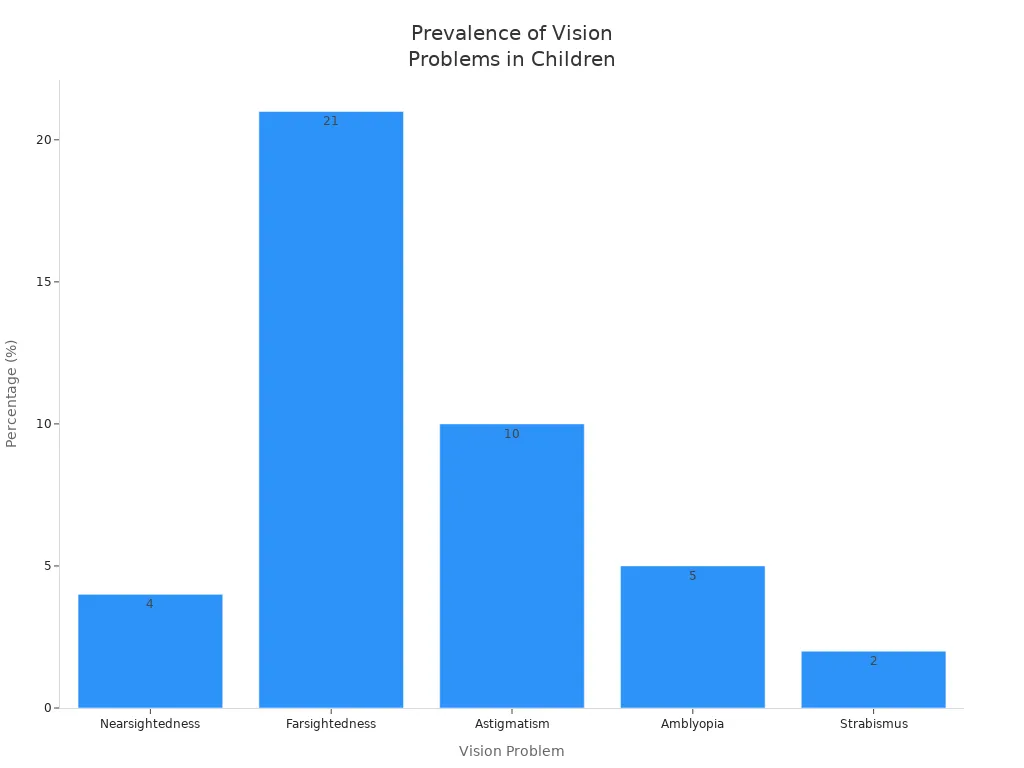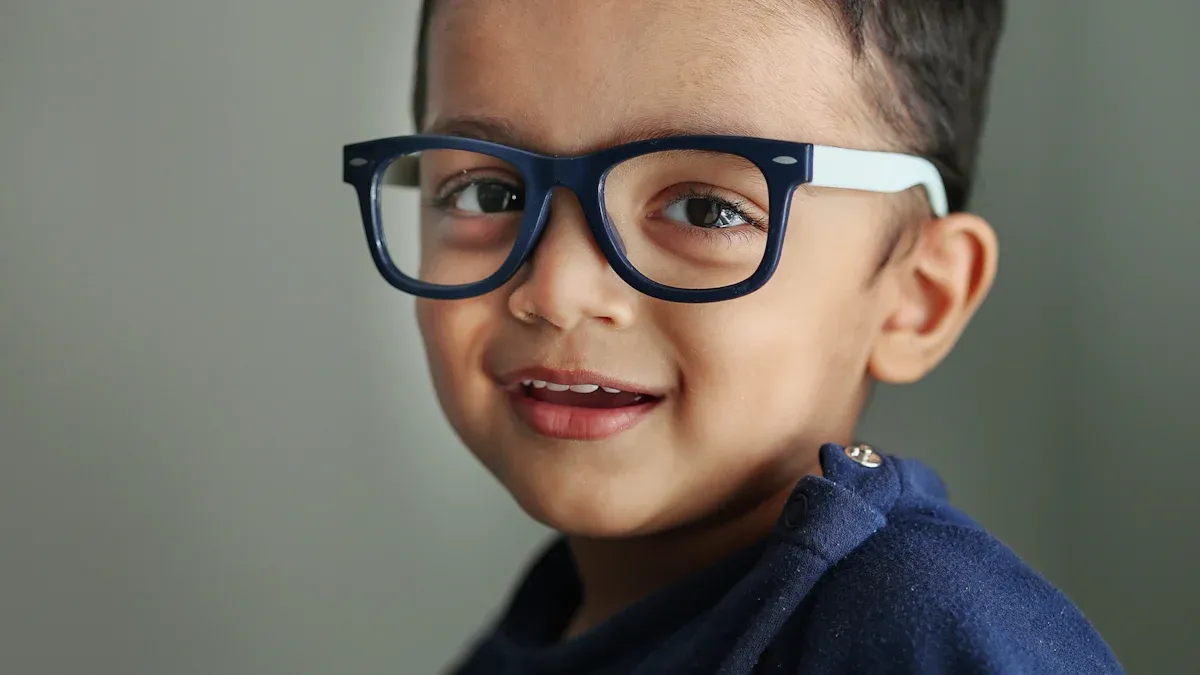
Should a 5 year old wear glasses and the benefits of audio glasses for kids
Share

You might feel unsure when your child needs glasses at age five, but it’s actually common and helpful. Glasses boost learning, focus, and confidence.
Prescription eyewear helps kids read and do math better.
Audio glasses for kids offer extra support and keep children safe. Let your child pick their frames for more excitement.
Key Takeaways
Many five-year-olds wear glasses. Glasses can help your child learn better. They can also make your child feel more sure of themselves. - Watch for signs your child needs glasses. These signs include squinting or trouble seeing clearly. If you see these, set up an eye exam. - Let your child pick their own frames. This can make them happier to wear glasses. It can also help them feel more confident.
Wearing Glasses at Age 5
Wearing glasses at age five is more common than you might think. Many kids need eyewear to help them see clearly and learn better. You may worry about your child feeling different, but glasses are now seen as stylish and normal for young children. More parents and teachers notice vision problems early because of better screenings and awareness. Early correction matters because untreated vision issues can affect learning, development, and self-esteem.
Tip: If your child needs glasses, you’re not alone. Up to 1 in 20 preschoolers in the U.S. have a vision problem. Early treatment helps prevent permanent vision loss and supports healthy development.
Signs Kids Need Glasses
You might spot signs that your child needs glasses before the eye doctor does. Watch for these behaviors:
Squinting, covering one eye, or tilting their head
Bringing their eyes close to TVs, tablets, or books
Rubbing their eyes often
Complaining about headaches or eye pain
Struggling in school, avoiding reading, or losing focus
Vision problems can show up in many ways. Here are the most common issues diagnosed in 5-year-olds:
Myopia (short-sighted)
Hyperopia (long-sighted)
Amblyopia (lazy eye)
Convergence insufficiency
Depth perception and 3D vision difficulties
Double vision
Eye fatigue
Eye teaming problems
Focusing difficulties
Hand-eye coordination difficulties
Strabismus (crossed-eyes)
Visual processing dysfunction
If you notice any of these signs, schedule a visit with an eye doctor. Early action can make a big difference.
Eye Exam Process
When you take your child to the eye doctor, you can expect a friendly and simple process. The doctor uses special tests designed for young kids. Here’s what usually happens:
Test Type |
Description |
|---|---|
Visual acuity |
Measures how well your child sees near and far using symbols instead of letters. |
Lazy eye |
Checks for amblyopia, also called lazy eye. |
Stereopsis (3D vision) |
Looks at how well both eyes work together using dot patterns. |
Eye tracking |
Tests how smoothly your child follows moving objects. |
Convergence |
Assesses focusing on things up close. |
Color vision |
Uses pictures to see if your child can tell colors apart. |
Ocular health |
Checks overall eye health to rule out problems. |
These tests help the eye doctor find out if your child needs glasses or other treatment. Healthy vision supports learning and school success.

If your child has a problem like amblyopia or strabismus, early correction is key. Untreated, these conditions can lead to permanent vision loss and trouble with depth perception.
Common Concerns
You may have questions or worries about your child wearing glasses. Here are some common concerns parents share:
Is it too early for an eye exam? Early exams prevent long-term issues.
Will misaligned eyes or focusing problems affect my child’s learning? Glasses and early treatment help fix these issues.
How will my child adjust to wearing glasses? Most kids get used to eyewear quickly, especially if you let them pick their frames.
Some parents worry about teasing, but glasses are now a popular accessory for kids. Many children feel proud of their new look. If you have concerns, talk to your eye doctor. They can answer questions and help your child feel comfortable with their glasses.
Benefits of Wearing Glasses
Learning and Concentration
After getting glasses, your child may pay better attention in class. Clear vision lets kids read the board and follow books. They can focus on lessons and join school activities more. Glasses help your child stay on task and take part in class. Teachers often notice students with new glasses work harder and listen more.
Here’s how glasses can help kids do better in school:
Group |
Improvement in Academic Performance |
Equivalent Additional Learning |
|---|---|---|
All Students |
2 to 4 months of additional education |
|
Lowest Quartile |
4 to 6 months |
4 to 6 months of additional learning |
Special Education Students |
4 to 6 months |
4 to 6 months of additional learning |
These benefits happen because glasses make vision clearer. Kids who had trouble focusing before can now pay attention and finish work.
Tip: If your child avoids reading or seems distracted, glasses might help a lot.
Kids with glasses can focus better.
Students without glasses may lose focus and join less.
Eyewear helps kids enjoy learning and stay on track.
Social and Emotional Impact
Glasses can change how your child feels and acts with others. Some kids worry about what friends think, especially at age five. Sometimes, classmates think kids with glasses look different or act different. This can affect who they play with or talk to. You may see this more in kids who notice what others think.
But fixing vision early helps your child feel better:
Better time with friends
More fun in games and group play
Happier feelings every day
More chances to join sports and activities
Stronger social and emotional growth
When your child sees well, they feel braver and join in more. Glasses help your child feel happier and more included, not just at school but everywhere.
Audio Glasses for Kids

How They Work
Audio glasses for kids look like regular eyewear, but they do much more. These smart glasses use tiny speakers built into the arms. You do not need headphones or earbuds. The sound travels straight to your ears, so you can listen to music, audiobooks, or even your teacher’s voice during online classes.
Here’s what makes these glasses special:
Safe blue light protection shields your eyes from screens.
Wireless sound lets you hear without blocking your ears.
Lightweight frames keep you comfortable all day, whether you are at school or home.
You can wear them just like any other glasses. The controls are easy to use, so you can adjust the volume or pause audio with a simple touch.
Note: Audio glasses for kids help you learn and play without missing out on what’s happening around you.
Safety and Age Suitability
You might wonder if these glasses are safe for young children. Most audio glasses for kids use open-ear technology. This means you can still hear your friends, teachers, and family while listening to audio. You stay aware of your surroundings, which is important for safety at school or outside.
Manufacturers design these glasses for comfort and durability. They fit smaller faces and use flexible materials. Most brands recommend them for ages five and up. Always check the age guidelines before you buy. If you want eyewear that helps with both vision and sound, audio glasses for kids offer a smart and safe choice.
Benefits of Audio Glasses for Kids
Educational and Entertainment Value
You want your child to learn and have fun too. Audio glasses for kids help make this happen. These smart glasses let your child listen to audiobooks or language lessons. They can also hear educational podcasts while playing or riding in the car. A car trip can become a time to learn new things. Your child can listen to stories or songs without bothering anyone else.
Kids also like to be entertained. With audio glasses for kids, your child can enjoy music, games, or cartoons in private. The sound comes from the frames, so your child still hears what is going on around them. You do not have to worry about tangled cords or losing earbuds. These glasses are easy and safe to use.
Tip: Try using audio glasses with your child’s favorite learning app. You may see your child get more interested in reading or math.
Here is a quick chart showing how audio glasses compare to other devices:
Feature |
Audio Glasses for Kids |
Headphones |
Speakers |
|---|---|---|---|
Hands-Free Learning |
✅ |
❌ |
❌ |
Safe for Ears |
✅ |
❌ |
✅ |
No Wires Needed |
✅ |
❌ |
✅ |
Awareness of Surroundings |
✅ |
❌ |
✅ |
Hearing Protection
You want to keep your child’s hearing safe. Regular headphones can get too loud and block outside sounds. Audio glasses for kids use open-ear technology. This means your child hears at a safe volume and still notices things like your voice or a car horn.
Many brands set limits on how loud the sound can be. You can check and change the settings if you need to. If you worry about hearing loss, audio glasses are safer than normal headphones.
No earbuds push into the ears
Less chance of ear infections
Safer sound levels
Note: If your child says their ears hurt or they cannot hear well, talk to your doctor. Acting early can stop bigger problems later.
Responsible Use
You want your child to use technology in a smart way. Audio glasses for kids help teach good habits. You can make rules for when and where your child wears their glasses. For example, you might allow audio during homework or car rides, but not at dinner.
Kids learn to balance screen time and real life. You can show your child how to take breaks and care for their glasses. If your child loses focus or gets distracted, remind them to use the glasses only for learning or safe fun.
Here are some easy tips for using audio glasses the right way:
Set a daily time limit for audio
Remind your child to clean their glasses
Encourage breaks from technology
Check that the glasses fit well and feel good
Callout: Using technology the right way helps your child enjoy it without missing out on family or outdoor fun.
If you have questions about safe use, ask your doctor or eye care expert. They can help you set good habits and answer your questions.
Choosing Glasses for Kids
Picking Frames
Letting your child pick their own frames can make a huge difference. When you give your child a choice, you help build confidence and make them feel proud of their eyewear. Kids who like the look of their frames want to wear them more often. Try to find frames that are fun, colorful, and match your child’s personality. You might notice your child gets excited about wearing glasses when they love the style.
Here are some tips for picking the right frames:
Let your child choose their favorite frames to boost motivation.
Make sure the frames fit well and do not slip or leave marks.
Pick frames that are the right size—not too big or too small.
Look for frames that are lightweight and durable for active play.
Check that the frames sit comfortably on the nose and do not touch the cheeks.
Choose a design your child finds attractive.
Ask the doctor for advice on frame size and fit.
Tip: Frames that fit well and look cool can turn glasses into a favorite accessory!
Comfort and Habits
Comfort matters just as much as style. Glasses should fit snugly behind the ears but never feel tight. During the fitting, check for any pressure points. Lightweight frames help your child forget they are even wearing eyewear. The doctor can measure lens width, bridge width, and temple length to make sure everything fits perfectly.
To help your child wear glasses every day, try these strategies:
Strategy |
How It Helps |
|---|---|
Let them pick frames |
Increases excitement and pride |
Build a routine |
Makes wearing glasses part of daily life |
Use positive rewards |
Encourages regular use |
Involve the family |
Shows support and makes it feel normal |
If you notice any discomfort, visit the doctor for an adjustment. Comfortable eyewear and a fun routine make wearing glasses easy for your child.
You give your child a strong start with early vision care. Healthy eyes boost confidence, learning, and social skills.
Regular eye exams help catch problems early.
Glasses or audio glasses support safe, happy growth.
Experts suggest annual checkups and letting kids help pick frames for comfort and style.
FAQ
Can my child play sports while wearing glasses?
Yes! You can get special sports frames or straps. These keep glasses safe and comfortable during play. Ask your eye doctor for recommendations.
How do I clean my child’s glasses?
Use a soft cloth and lens cleaner. Avoid paper towels or shirts. You can rinse with water first to remove dust. Clean daily for best results.
Are audio glasses safe for young kids?
Audio glasses use low-volume, open-ear sound. Your child can hear surroundings and avoid ear pain. Always check age guidelines and supervise use for safety.
